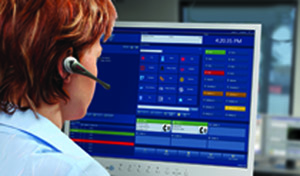Don’t get me wrong – the benefits for all of us, from call takers to administrators to first responders and citizens, of course, will be tremendous.
We, as citizens, will be able to request help from 9-1-1 in so many quick and easy ways. And Public Safety Answering Points (PSAPs) will have more information than ever to make the best decisions and provide the best response. But while we focus on when and how we’ll implement networks and enable connectivity, and worry about all of the things that are to come, we’re overlooking the most critical impact of NG9-1-1 – the impact it will have on our call takers’ experience, and what that means to the speed and accuracy of their responses.
The truth is an i3 network and NG9-1-1 implementation will only be as good as the call takers’ (or agents’) ability to effectively manage the NG9-1-1 incidents. Success will be dictated by what our call takers can do with the new technology to effectively manage the new information in order to make better, more informed decisions that protect their communities with faster, more efficient response.
So while we wait for the networking components to become reality, what should we do? How can we prepare now to ease the transition to NG9-1-1 for our call takers? The answer: workflows.
A workflow is everything call takers see on their 9-1-1 system screen and anything they do to interact with the system. It includes how they gather and enter information, the decisions they make, and the clicks they take to conduct operating procedures necessary to disperse calls and more. I urge PSAPs to establish a process to effectively evaluate the interaction between call takers and the applications; and then to design or redesign Standard Operating Procedures and focus on training and user experience.
Why is it important to do this? PSAPs can improve their current work flows, minimizing time spent on calls and complexity of decisions (or even indecision), as well as to understand process errors so they can be reduced or eliminated. One such plan for doing this is to:
-
List the most common scenarios/emergency situations
-
Flow chart the process as performed by the call taker
-
Identify detailed activities or decision processes as explained by the call taker
-
Time each step using a stop watch, video, etc.
-
Chart the workflow graphically to see the process on paper, helping identify areas for improvement
Bottom line… Become a workflow expert. That is the only way we’ll be able to easily and quickly adapt to the NG9-1-1 world that’s coming. All of the information that comes with it is a large opportunity for information overload on our call takers, but it doesn’t have to be if we face it head on. Let’s get proficient now at implementing and managing new features and data and avoid becoming a victim. Let’s become logical and efficient in our workflows of today to prepare for the new and increasing workflows of tomorrow.
If this topic interests you, be sure to talk to your Chicago Communications representative about how to stay in the loop. Or visit Cassidian Communications website and sign up to receive information regarding future webinars.
 This article was written by Jeff Gillan, senior product business area manager for Cassidian Communications. With over 20 years of technology industry experience, including eight with Cassidian Communications, Jeff is responsible for driving solution innovations that keep the company’s and Chicago Communications’ customers at the forefront of next generation emergency communications.
This article was written by Jeff Gillan, senior product business area manager for Cassidian Communications. With over 20 years of technology industry experience, including eight with Cassidian Communications, Jeff is responsible for driving solution innovations that keep the company’s and Chicago Communications’ customers at the forefront of next generation emergency communications.



